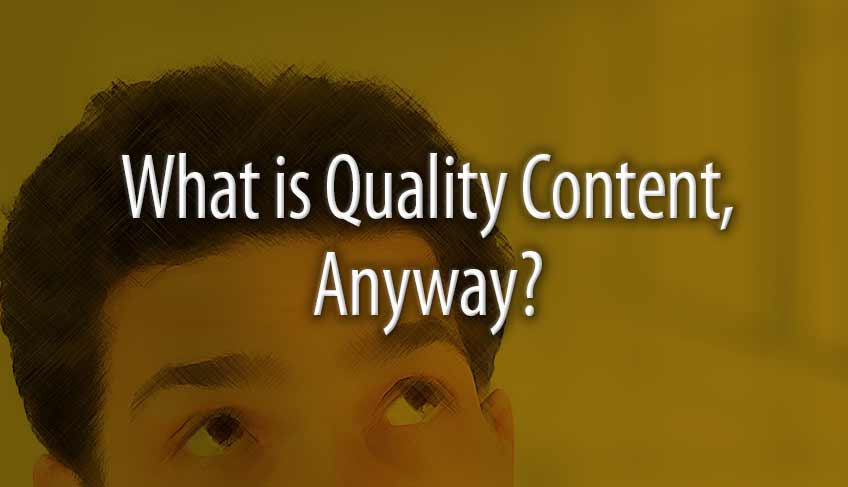
B Y T O M T O R T O R I C I
Google says they reward websites with ‘quality content’ in their search rankings – in fact it’s supposed to be one of the leading ranking factors these days.
Why? Because, well, that’s the kind of content people are drawn to, and Google’s mission is to make your every search a fruitful one.
But, ah, what exactly is Quality Content anyway? And how can Google’s army of bots determine what is excellent reading, bless their algorithmic little hearts?
As far as I can tell, when Google mentions quality content, they’re referring to five things. The first four are:
1. Unique, original text, that has not been copied, or ‘spun’ (reworded) from another piece of content.
2. A lack of spelling, punctuation and grammatical errors.
3. A good length, at least 300 words on the page, but if you can squeeze out 1200, even better.
4. A focus on a single, well-defined topic.
Now, you and I know that some of the most boring and unhelpful writing in the world is capable of satisfying that undemanding set of expectations. Hence, Google includes a fifth criteria:
5. Lots of other people are not only landing on that page, but sticking around long enough to absorb at least some of it.
Now follow me beyond the stats, if you will, for a definition of quality content that survives human rather than digital assessments. I too have five criteria. The first four are:
1. It’s interesting
2. It’s useful
3. It’s relevant
4. It’s entertaining
A chunk of reading that does an amazing job with just one of those would certainly qualify as a valuable use of pixels, though two or more would surely be a bonus. News about upcoming road work in your neighborhood might not be entertaining, but it is relevant, and additionally useful if it helps you avoid that area when you’re driving to work. So there’s overlap.
My number 5 is the same as Google’s. By way of a paper analogy, bookstore best sellers achieve that exalted status because piles of people out there are using their precious spare time to scarf up the words between their covers. That must mean something.
Number 5, in both lists, is the one criteria you have no control over, other than actively devoting yourself to the other four items on both lists, and hoping for the best. Go back and read them again.
Overall, that’s our best chance for not only getting our article up on people’s screens, but making a genuine impact when it does.
When you’re the reader, you instinctively recognize quality content because the words, and the ideas behind them, have genuinely connected with you. You’re more likely to remember them, and share them.
When you’re the writer, that’s what you’re aiming for. Engaging communication, at its core, isn’t just about what you think, but about shared experiences that happen to be interesting, useful, relevant, and/or entertaining.
Knowing all this might not make you a powerful writer. But earnestly putting these guidelines into practice while doing lots of writing is your best shot at getting there.
Share It:
 About the Author: Tom Tortorici is an Atlanta copywriter and web content writer who helps companies make a genuine connection with their audience. His classes and conference presentations have focused on how writing, strategy and design can work together to grab attention and interest even among readers with short attention spans. In addition to working directly with businesses, Tom regularly partners with web designers and marketing agencies.
About the Author: Tom Tortorici is an Atlanta copywriter and web content writer who helps companies make a genuine connection with their audience. His classes and conference presentations have focused on how writing, strategy and design can work together to grab attention and interest even among readers with short attention spans. In addition to working directly with businesses, Tom regularly partners with web designers and marketing agencies.
All Posts/Subscribe >
Info for Businesses >
Info for Designers/Agencies >
Tom Tortorici Inc. | Tom@TomTortorici.com | 770-934-7861 | 3101 Rockaway Rd | Atlanta GA 30341
